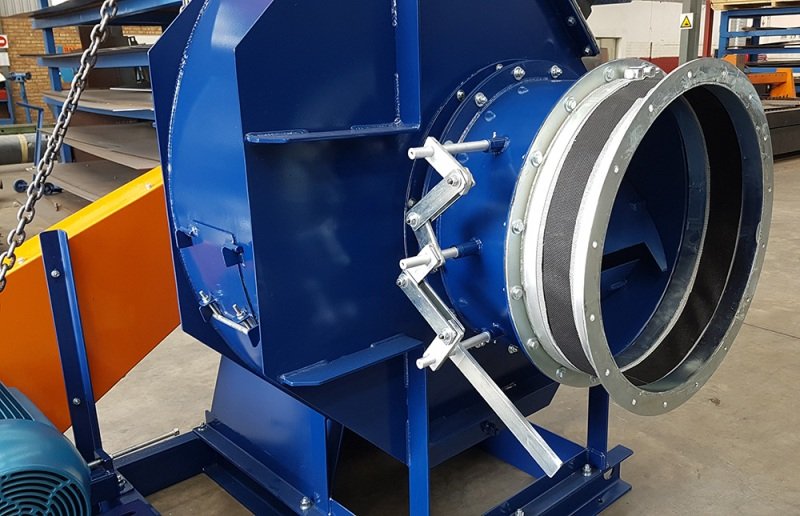
What are Dampers Used for In HVAC?
Are you familiar with what dampers are in HVAC? And how do they work? A damper is a mobile plate located in the ductwork controlling airflow and redirecting it to certain areas of a building. It is one of the many parts of the HVAC system making It work properly. When It functions correctly, your house will be in an incredible position in regards to the heating and air conditioning. You can get high-quality HVAC maintenance services to keep you and your family comfortable throughout the year.
Dampers are commonly used in zone control structures. They are also fundamental for the companies where liquids and gases are moved via ducts and pipes to give control over the outflow of materials. Do you want to understand more about the HVAC dampers and how they work? Keep reading to learn more.
Understanding The basics
What are the two common types of dampers?
The Automatic Dampers
They use small motors when opening and closing the valves and the damping plates. They are unique since they are controlled using a remote and they can be self-regulated depending on the climatic changes. Their operators utilize the thermostats to install the required conditions in every zone. The thermostat then computes the exact temperature and the airflow which can attain the set conditions. These dampers can give a much accurate internal climate state compared to manual dampers.
The Manual Dampers
Most of them have a simple design. This enables an operator to regulate the airflow easily. The levers outside the ducts and air vents do control the damper plates. Their maintenance is free and they are quite long-lasting. The only disadvantages of these dampers are that they cannot be regulated using a remote. This makes it hard for those buildings that set up their HVAC on or close to the ceilings. They also don’t have the precision of the automatic ones.
How Do The HVAC dampers work?
![]()
First things first, getting into details about what dampers are will give you a clear overview of how they function. The damper in the HVAC system is equipment that regulates the temperatures in your residence when employing a zoning system. The dampers are like the valves which settle for the amount of cooled or heated air needing supply. This is especially in the various areas of the ductwork which will then increase or decrease the temperature of the zone to the preferred number.
The dampers function to assist in controlling the quantity disseminated to the required zone. They are distinctive and not just for closing a vent on the wall or the floor. Furthermore, a covered vent enables the cooled or heated air to move to the extent of the duct. This is where it remains and expends while returning to room temperature. The dampers operate and are situated near to the opening of the supply pipe and then holds or push the air from that section as required. The pressure in the given pipe then resupplies the airflow to the zone in need of regulation during a certain time.
Tracking Down The HVAC Dampers
Locating your dampers first is important when you want to make some adjustments. The process is quite easy for many people. However, it can reach a time for some readers where adjusting the dampers is not a course of action. In some residences, mostly the newly built, the dampers connected to the ductwork are not balanced. This can be noted as a substandard cost-reducing method. In other houses, the damper is covered by drywall when undertaking renovations or perhaps when a basement is completed in a rec space.
However, industrious contractors always use untrue vents to reach the damper hold and therefore sparkle a flashlight in every ceiling vent in the basement. This is to confirm whether whatever you reckoned was an operational vent is an entry panel. On the other hand, in any case, if you have a premium system, you may get electronic dampers that are automatically regulated by the heating and cooling appliance to give a controlled airflow. If you are not certain whether you own this kind of system, you can understand it effortlessly. Rather than the physical handles, the dampers may have tiny motors with fixed wires.
Besides the given instances, finding the dampers can be easy. Just go to the furnace, it can be in your utility room, basement, crawl space, or any other area. Check the major duct trunks which radiate off your furnace. The HVAC dampers are often approximately between two to six feet of the trunk.
How Can You Identify Issues Affecting Your Dampers?

Did you know the zone dampers are normally quite reliable in regards to monitoring the airflow in a system? Though, there are instances when they do break down and create cooling or heating problems. Several factors can initiate the damper issues, however, the good news is that the systems normally crash in a relatively foreseeable manner. This makes the problem is easy to diagnose. You can inspect the airflow of the register while the HVAC system is operating. Analyzing the variations in the airflow through the duct line will enable you to see where the issue is. Check out the following techniques to help you evaluate the state of your automatic or manual damper.
Analyzing the automatic dampers
It requires turning it on and then adjusting the zone thermostats up to a level warranting the airflow. Inspect for airflow in the linked zone registers. When you feel a slight airflow and the room isn’t retaining its temperature, or if there’s enough flow and your room is chilly, the damper may be defective. Moreover, a faulty damper is one of the least expensive situations you’ll come across in the main heating and air conditioning apparatus. When you avert the problem, it can be an initial stage in fixing the system.
Manual Dumper
For a manual one, you can cover a particular damper using the handle of the damper. As the air flows through the other parts of the system, you can evaluate the registers related to the specific damper to confirm if the airflow has stopped. Proceed to reopen it and assess the registers once more. In case you sense the airflow when it is closed, or if there isn’t any airflow when it’s open, it may be damaged.




